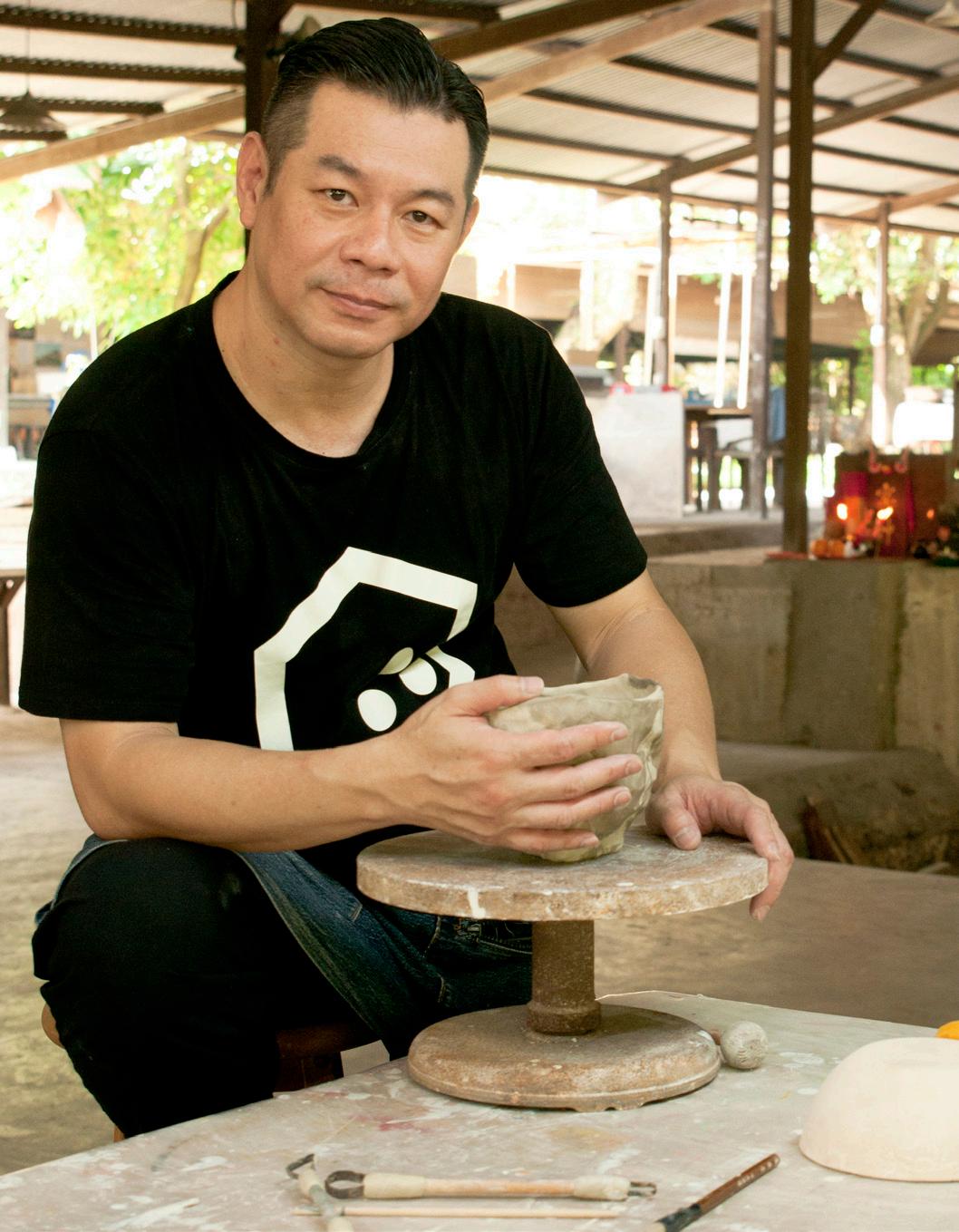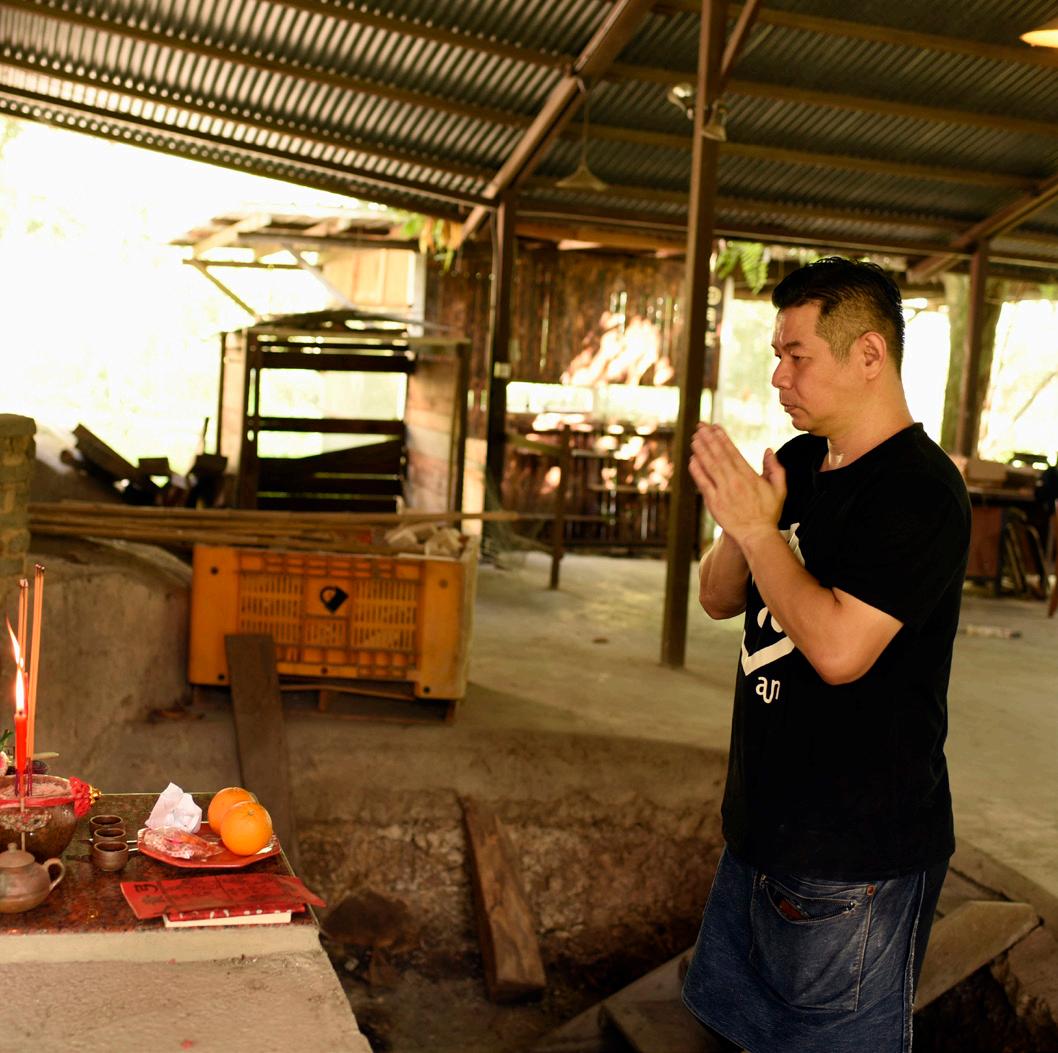
4 minute read
Faces Behind the Makers
Discovering Singapore's Heritage Trades
Firing the Dragon - Guan Huat Dragon Kiln
Advertisement
by Elena Boyce
The dragon kiln adds a touch of magic and drama to the art of pottery. The dragon or climbing kiln, is shaped to resemble a dragon, and is a traditional kiln whose design originated in Southern China around 2000 years ago. When ceramics are ready for firing, the kiln is heated and comes to life. It makes roaring and hissing sounds, fire comes out of its nostrils and smoke comes out through the chimney at its tail.

Inside the Guan Huat Dragon Kiln
In the early 1900s, Chinese immigrants established around 20 wood-fired dragon kilns in Singapore. Today there are only two dragon kilns left that can transport visitors back to the once-thriving pottery industry in Singapore. The Guan Huat and Thow Kwang kilns are located in Jurong where the soil, known as “Jurong formation” soil, is particularly suited to pottery production.
I had the chance to visit with Alvin Ng, a graphic designer and a talented potter, who works at Jalan Bahar Clay Studios (www.jbcssg.com), located at the Guan Huat Dragon Kiln (circa 1958).

Alvin Ng
Alvin, why does working at the Guan Huat Dragon Kiln attract you?
The nature of this place really appeals to me. After learning more about its history, I was even more enticed by this place. This is the longest existing dragon kiln in Singapore and it has been left in its original state with no modifications. It is the longest of the two remaining dragon kilns in Singapore. Also, the bricks used are all made in Singapore. I am very proud and grateful to our ancestors who built the kiln.
I enjoyed a cup of tea in a beautiful tea room you created. How did you create the tea room?
I’ve been learning the Japanese tea ceremony for the past year, and I’ve especially enjoyed its peace and mindfulness. In collaboration with Hafig from Focus Ceramics, I created an upcycled tea room using woods and nails from the crates that ship the clay material. I added a zen garden, made the table and chairs and painted the hanging scroll. Other potters brought their pots and sculptures and planted some plants around the tea room to decorate the place.
What does Singapore’s heritage mean to you?
For me, Singaporean heritage shapes my values, personality, and goals. Importantly, our cultural heritage connects the past with the present and the future. It means contemplating, understanding and practicing the customs (such as wood-firing) and achievements of our ancestors and passing them on to the younger generation. Honoring our heritage means making a little bit of the past perpetually present today and in the future.
How does pottery feature in Singapore’s heritage?
In the past, pottery was a livelihood. Our ancestors used these traditional techniques to provide for their families and the trade shaped our society’s culture. Today, people use these inherited traditions to enrich our lives, reshape our communities and even push the boundaries of pottery.

Alvin at the Kiln's Shrine
I have some exciting plans to engage the community and showcase pottery as part of Singapore’s vibrant heritage, including offering experience workshops as part of the Singapore Heritage Festival 2022 and Pottery Weekend Market. The response to the experience workshops was overwhelming, as most were already fully booked before the festival.

Alvin's Pottery
What are the challenges this Dragon Kiln is facing?
The current challenge is the lease of this land, as we don’t know the future plans for the area and the dragon kiln may face demolition. We sincerely hope that the authorities consider preserving this place as it is an integral part of our cultural heritage. Also, the art of pottery is often described as therapeutic and relaxing, so we need more avenues for people today to improve focus, be present, open up their minds, and relieve external distractions. Historical places like this one are also important because there are not many places on this island where one can enjoy pristine nature, explore history and work with one’s hands.

Elena Boyce is currently working on her new photographic project "Faces Behind the Makers" that aims to create awareness and revive an interest in Singapore's heritage trades. Find out more at www.photoimpressia.com










